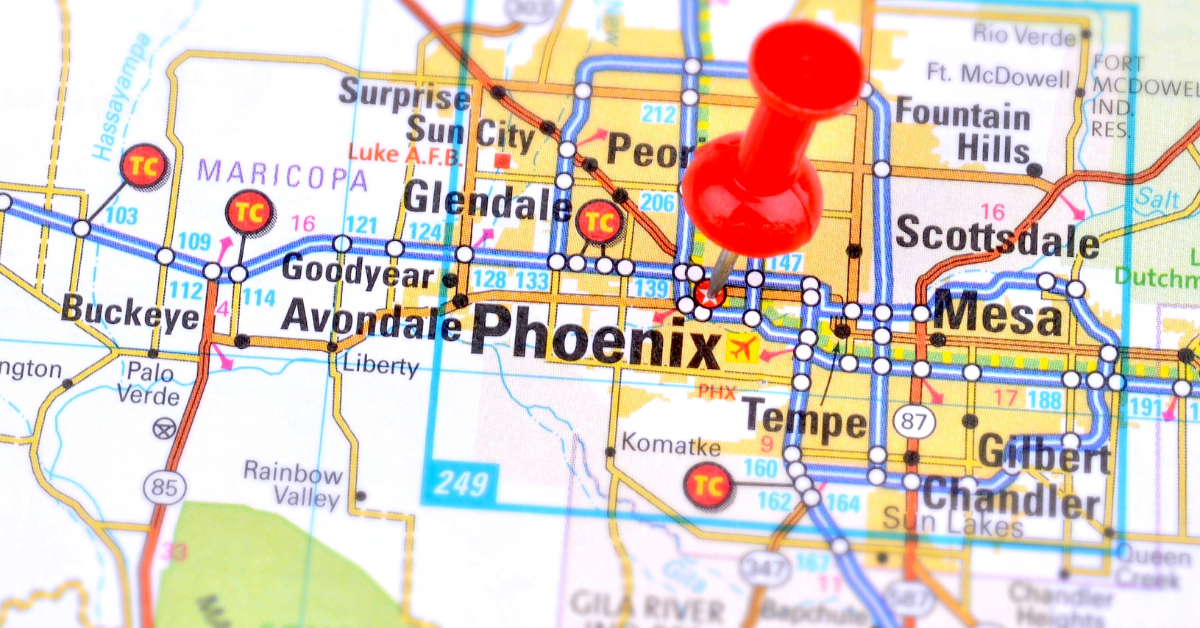The American city Phoenix is written in Japanese as “フェニックス.” However, behind this lies the mythological expressions “不死鳥” (Immortal Bird) and “鳳凰” (Chinese Phoenix). This article explains the difference between the practical katakana notation used for city names and the cultural or symbolic kanji representations.
The Basic Japanese Notation of Phoenix and Its Usage
When referring to the city of Phoenix in Japanese, the most common form is the katakana “フェニックス.” Foreign city names and loanwords are generally written in katakana, which makes them easy to recognize for both Japanese speakers and foreigners. Newspapers, maps, and travel guides all consistently use this form.
At the same time, in literature or tourism promotions, Phoenix may be described as “不死鳥の街フェニックス” (the City of the Immortal Bird, Phoenix). This emphasizes the symbolic meaning behind the name rather than serving as a simple translation.
| Notation | Usage | Feature |
|---|---|---|
| フェニックス | General city name notation | Practical and internationally recognizable |
| 不死鳥の街フェニックス | Tourism brochures and cultural introductions | Highlights the city’s symbolism |
| 鳳凰 | Literature and art | Formal expression influenced by Chinese culture |
Mythical Phoenix and Variations in Kanji Representation
The word “Phoenix” originates from the mythical firebird of ancient Egypt and Greek mythology. This bird is said to burst into flames at the end of its life and be reborn from its own ashes, which is why it is called “不死鳥” (Immortal Bird) in Japanese. Other kanji notations include “鳳凰” (hōō), which has roots in Chinese culture, and “鳳凰城” (hōōjō, Phoenix City), used in Chinese as a place name.
| Kanji | Reading | Meaning |
|---|---|---|
| 不死鳥 | fushichō | Direct translation meaning a bird that revives from ashes |
| 鳳凰 | hōō | A Chinese legendary bird symbolizing prosperity and harmony |
| 鳳凰城 | hōōjō | Chinese interpretation, used for place names or literature |
In Japanese, “不死鳥” is often used metaphorically to describe a person or group that rises again after hardship, such as “reviving like a phoenix.” Meanwhile, “鳳凰” is used in cultural or religious contexts, such as temple decorations, giving the term a more noble and mystical nuance.
Phoenix as a City Name and Its Cultural Usage
When referring to the capital of Arizona, the katakana notation is mandatory. Maps, administrative documents, and official guides always use “フェニックス,” and kanji is not used in this context.
However, in cultural or promotional contexts, kanji appears. For example, tourism campaigns may describe the city as “不死鳥の街フェニックス”, drawing a symbolic link between the harsh desert environment and the mythical bird that rises from ashes.
| Context | Notation | Explanation |
|---|---|---|
| Official documents and maps | フェニックス | Practical and internationally standardized |
| Tourism slogans | 不死鳥の街フェニックス | Expresses rebirth and strength |
| Literature | 鳳凰 | Stresses mystical and cultural meanings |
The Cultural Significance of Kanji Notation
Kanji in Japanese conveys not only sound but also direct meaning. The characters “不死鳥” immediately suggest “a bird that never dies and is reborn.” This makes it easier for learners of Japanese to grasp both the word’s meaning and cultural connotations.
The kanji “鳳凰” has even deeper cultural roots, connected to Chinese traditions where the bird symbolized emperors and prosperity. In Japan, the hōō appears in temples, traditional art, and architecture, symbolizing holiness and auspiciousness.
| Kanji | Cultural Background | Meaning |
|---|---|---|
| 不死鳥 | Origin in Western mythology | Bird reborn from ashes, symbol of rebirth |
| 鳳凰 | Rooted in Chinese culture | Symbol of emperors and prosperity |
| 不死鳥+city name | Japanese metaphorical usage | Expresses a city’s history or resilience |
The Symbolism of Phoenix in Modern Usage
The word Phoenix is not only a city name but also a symbol of rebirth and resilience in modern society.
For example, when companies or organizations rebuild after bankruptcy, they are said to have “risen like a phoenix.” Sports teams and schools also often use the Phoenix as a mascot, emphasizing victory, renewal, and indomitable spirit.
Similarly, the city of Phoenix itself has overcome severe desert conditions and water shortages to grow into a major metropolitan area, which naturally reinforces its association with the mythical bird.
| Usage | Meaning | Background |
|---|---|---|
| Corporate recovery | Rose like a phoenix | Highlights overcoming difficulties |
| Sports teams | Phoenix as a mascot | Expresses victory and renewal |
| City history | City of the Phoenix | Symbolizes development despite harsh environment |
Conclusion
The city name Phoenix is consistently written in katakana as “フェニックス” in Japanese. However, when referring to the mythical bird from which the name derives, the kanji “不死鳥” and “鳳凰” are used.
To understand the name correctly, it is essential to recognize both the practical katakana notation and the symbolic kanji notation. For foreigners, learning this distinction not only aids Japanese language acquisition but also provides a deeper appreciation of Japanese culture.






